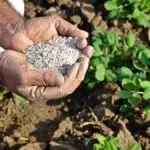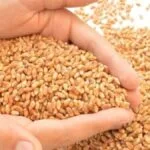Main Points In Hindi (मुख्य बातें – हिंदी में)
-
जलवायु परिवर्तन का प्रभाव: बदलती जलवायु, विशेष रूप से सूखे की स्थिति, कॉफी उत्पादन पर गहरा असर डाल रही है। ब्राज़ील और वियतनाम जैसे प्रमुख कॉफी उत्पादक देश गंभीर सूखे का सामना कर रहे हैं, जिससे फसल उत्पादन में कमी आई है।
-
अमेज़ॅन वर्षावनों का संरक्षण: अमेज़ॅन वर्षावनों में वनों की कटाई और जंगल की आग लंबे समय तक सूखे का एक प्रमुख कारण हैं। ये घटनाएँ पर्यावरणीय संतुलन को बिगाड़ रही हैं, जिससे वर्षा का स्तर प्रभावित हो रहा है।
-
कीमतों में वृद्धि: कॉफी की फसल पर पड़े प्रभावों के कारण, कॉफी के दामों में तेजी से वृद्धि होने की संभावना है। यह वृद्धि अंततः ग्राहकों को महसूस होगी, जब कॉफी की कीमतें बढ़ेंगी और उत्पादक कंपनियाँ लागत बढ़ाने के उपाय करेंगी।
-
2050 तक संभावित क्षति: इंटरगवर्नमेंटल पैनल ऑन क्लाइमेट चेंज की रिपोर्ट के अनुसार, मध्य अमेरिका में कॉफी उगाने योग्य भूमि की मात्रा 2050 तक 38-89 प्रतिशत तक कम हो सकती है, जो कि जलवायु परिवर्तन के गंभीर प्रभावों को दर्शाता है।
- स्थायी कृषि के लिए नए दृष्टिकोण: बदलते वैश्विक माहौल में, खाद्य पदार्थों और पेय पदार्थों की उत्पादन विधियों में परिवर्तन करना आवश्यक है ताकि वे भविष्य में उपलब्ध रहें और उनकी गुणवत्ता और मात्रा को सुनिश्चित किया जा सके।
Main Points In English(मुख्य बातें – अंग्रेज़ी में)
Here are the main points from the provided text:
-
Impact of Climate Change on Coffee Production: The changing climate significantly affects coffee crops, leading to severe droughts in major coffee-producing countries like Brazil and Vietnam, which have caused reduced harvests and increased prices.
-
Contributing Factors to Drought: Deforestation and forest fires in the Amazon rainforest have been identified as major contributors to prolonged droughts, disrupting the natural water absorption and rainfall cycles. This has resulted in previously lush areas becoming desert-like.
-
Price Increases for Consumers: The drought and subsequent crop failures are expected to result in higher coffee prices for consumers. Companies like Nestlé are already adjusting their retail strategies to mitigate rising costs, including reducing product sizes while maintaining or increasing prices.
-
Projected Future Losses in Coffee Farming Lands: Reports from the Intergovernmental Panel on Climate Change (IPCC) predict that by 2050, climate change could reduce the land suitable for coffee cultivation in Central America by 38-89% due to lower rainfall and higher temperatures.
- Need for Adaptation in Agriculture: The text emphasizes the fragility of global agricultural products in the face of climate change, advocating for the adoption of new methods to cultivate foods and beverages like coffee to ensure their sustainability in the future.


Complete News In Hindi(पूरी खबर – हिंदी में)
बेशक, हमारी बदलती जलवायु।
दुनिया के सबसे बड़े कॉफ़ी उत्पादक ब्राज़ील में इस साल रिकॉर्ड सबसे ख़राब सूखा पड़ा। सूखे ने फसल उत्पादन को काफी प्रभावित किया, जिससे यह कीमत में तेजी से वृद्धि के लिए मुख्य रूप से जिम्मेदार बन गया।
ब्राजील में लंबे समय तक सूखे का कारण क्या हो सकता है, इसकी जांच करते हुए, वैज्ञानिकों ने बताया कि अमेज़ॅन वर्षावन में जंगल की आग और वनों की कटाई इसके लिए जिम्मेदार थी।
वन क्षेत्र के व्यापक नुकसान का मतलब है कि पेड़ उतनी वर्षा को अवशोषित नहीं कर सकते हैं और इसे वायुमंडल में वापस नहीं छोड़ सकते हैं। इस प्राकृतिक चक्र के घटित होने के बिना, आगे की वर्षा को रोका जाता है, जिससे वे क्षेत्र मरुस्थलीकृत हो जाते हैं जो कभी हरे-भरे थे।
वियतनाम भी अरेबिका बीन्स का एक अन्य प्रमुख उत्पादक है, लेकिन 2024 में, दक्षिण पूर्व एशियाई राष्ट्र ने 10 वर्षों में सबसे खराब सूखे का अनुभव किया।
सूखा बढ़ते मौसम तक बढ़ गया, उपलब्ध पानी की आपूर्ति कम हो गई और कॉफी चेरी की फसल कमजोर हो गई।
संभावना है कि इन प्रभावों को ग्राहकों द्वारा महसूस किया जाएगा, क्योंकि इस नुकसान की लागत उन पर डाली जाएगी। रोस्टरों के अंदर और दुनिया भर के कैफे में, कीमतों में उल्लेखनीय वृद्धि होने की उम्मीद है।
उदाहरण के लिए, नेस्ले ने बढ़ती लागत की भरपाई के लिए खुदरा कीमतों को बढ़ाते हुए अपनी कॉफी के आकार को कम करने की योजना की घोषणा की। मूलतः, आप कॉर्पोरेट दिग्गज को बहुत कम, बहुत अधिक भुगतान करेंगे।
कॉफ़ी दुनिया की प्रतिष्ठित फसलों में से एक है जो हमारी नई, बदलती जलवायु में अनियमित मौसम पैटर्न से गंभीर रूप से प्रभावित होती है।
फसल के पौधे समृद्ध मिट्टी और लगभग 64 डिग्री से 70 डिग्री फ़ारेनहाइट तक के तापमान वाले उष्णकटिबंधीय, आर्द्र वातावरण में सबसे अच्छे से विकसित होते हैं।
हाल ही में इंटरगवर्नमेंटल पैनल ऑन क्लाइमेट चेंज (आईपीसीसी) की रिपोर्ट में अनुमान लगाया गया है कि कम वर्षा और उच्च तापमान से मध्य अमेरिका में कॉफी उगाने में सक्षम भूमि की मात्रा 2050 तक 38-89 प्रतिशत तक कम हो सकती है।
ड्यूक यूनिवर्सिटी में पर्यावरण नीति और प्रबंधन के एसोसिएट प्रोफेसर एलिजाबेथ शापिरो-गार्जा ने द कैनेडियन प्रेस को बताया, ‘जलवायु परिवर्तन और कृषि पर इसके प्रभाव के लिए कॉफी कोयला खदान में कैनरी है।’
‘अगर आपको सुबह का एक कप कॉफी पसंद है, तो जलवायु परिवर्तन निश्चित रूप से उस कप कॉफी की गुणवत्ता, उपलब्धता और कीमत को प्रभावित करने वाला है।’
एक कप जो की बढ़ती लागत के साथ फसल की पैदावार में कमी इस ओर ध्यान आकर्षित करती है कि दुनिया की कृषि वस्तुएं कितनी नाजुक हैं।
बदले हुए वैश्विक माहौल में, हमें उन खाद्य पदार्थों और पेय पदार्थों को उगाने के नए तरीकों को अपनाना होगा जिन्हें हम जानते हैं और पसंद करते हैं यदि उन्हें भविष्य के मेनू पर बने रहना है।
Complete News In English(पूरी खबर – अंग्रेज़ी में)
Indeed, our changing climate is having an impact.
This year, Brazil, the world’s largest coffee producer, experienced a record drought that severely affected crop production, mainly driving up prices.
Scientists investigating the long-lasting drought in Brazil pointed to wildfires and deforestation in the Amazon rainforest as main contributors.
The significant loss of forest area means that trees can no longer absorb as much rainfall and, consequently, cannot return it to the atmosphere. Without this natural cycle, further rainfall is hindered, turning previously lush areas into deserts.
Vietnam, another major producer of Arabica beans, also faced its worst drought in a decade in 2024.
This drought extended into the growing season, reducing the available water supply and weakening the coffee cherry crop.
Consumers are likely to feel these effects, as the costs of this loss will be passed on to them. Inside roasting companies and cafes around the world, significant price increases are expected.
For instance, Nestlé announced plans to raise retail prices and reduce the size of its coffee products to offset rising costs. This means consumers will end up paying more for less coffee.
Coffee is one of the iconic crops that is severely affected by unpredictable weather patterns due to our changing climate.
Coffee plants thrive best in rich soil and in warm, humid tropical environments with temperatures ranging from 64°F to 70°F.
A recent report from the Intergovernmental Panel on Climate Change (IPCC) estimated that by 2050, the amount of land suitable for coffee cultivation in Central America could decrease by 38-89% due to lower rainfall and higher temperatures.
Elizabeth Shapiro-Garza, an associate professor of environmental policy and management at Duke University, told the Canadian Press, ‘Coffee is like a canary in a coal mine for climate change and its effects on agriculture.’
‘If you enjoy a cup of coffee in the morning, climate change will definitely impact the quality, availability, and price of that cup.’
The rising costs and declining crop yields highlight how delicate our global agricultural products are.
In the changing global environment, we need to adopt new methods of growing the foods and drinks we know and love if we want them to remain on our future menus.


 By
By 





